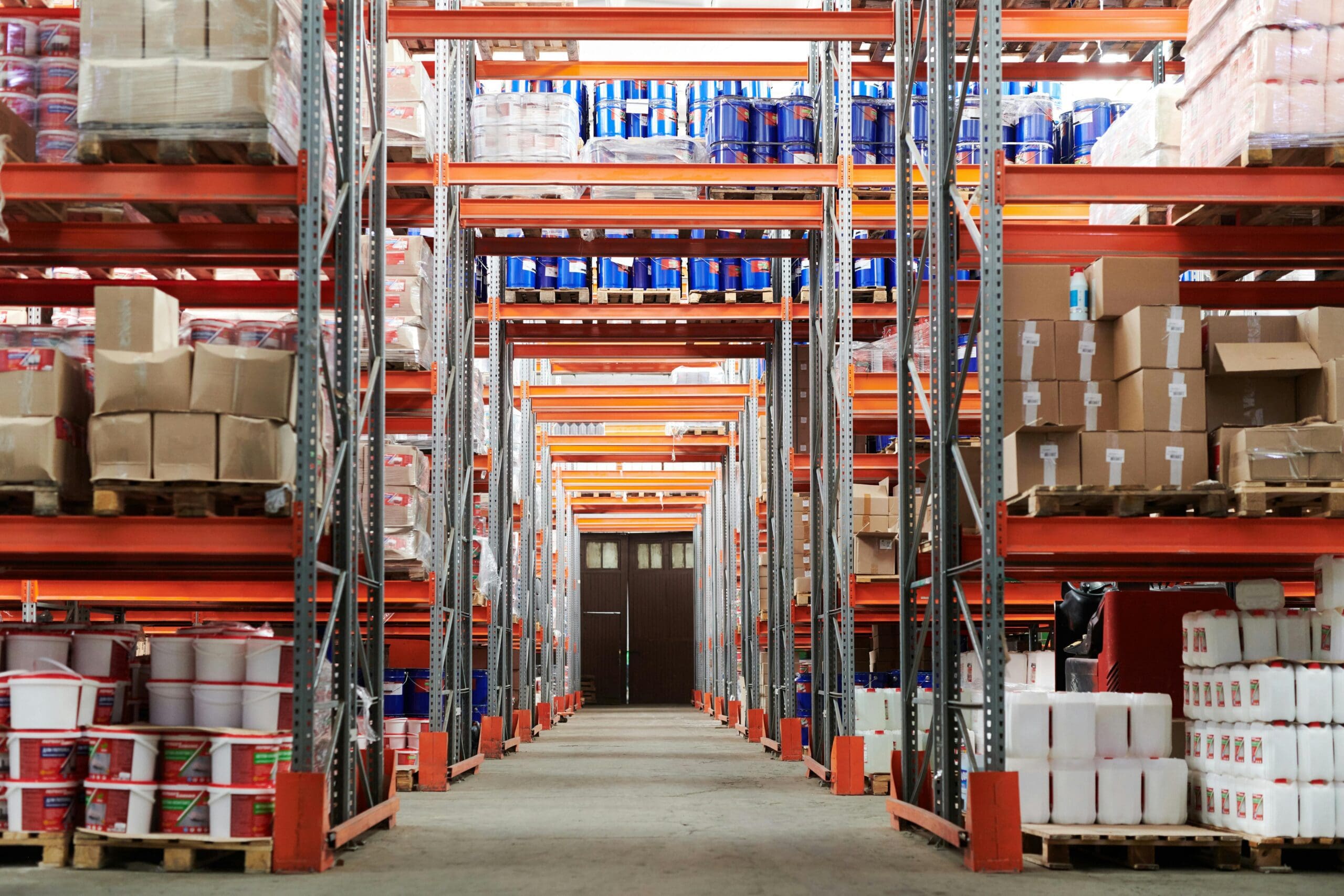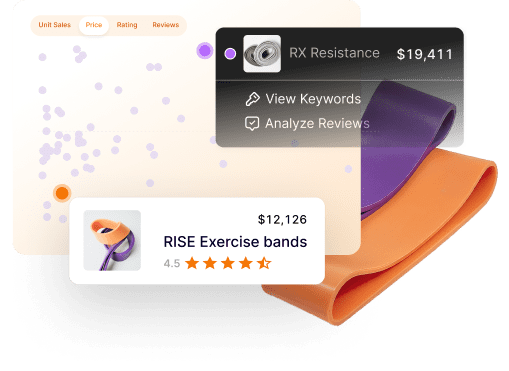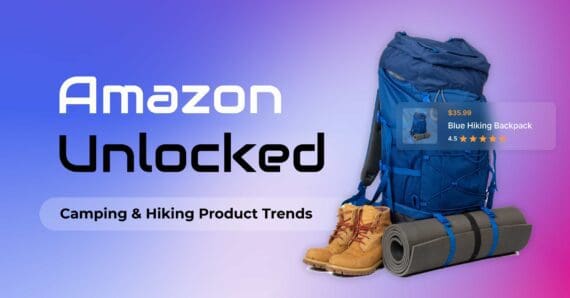To date, 60% of Amazon’s retail sales come from third-party (3P) sellers (rather than from Amazon itself).
A big part of this growth comes from the flexibility Amazon offers its sellers.
There are six popular Amazon business models sellers use to sell products on the platform (detailed below), and Jungle Scout’s survey of over 2,600 Amazon sellers reveals the breakdown of which business models most Amazon sellers use to sell on Amazon.
- Private Label: 54%*
- Wholesale: 26%
- Retail Arbitrage: 25%
- Online Arbitrage: 24%
- Dropshipping: 17%
- Handmade: 8%
*Note: some sellers use more than one business model, hence the overlap in percentages.
Let’s take a look at the differences of these six different Amazon business models, as well as what you can do to get started selling on Amazon using each one.
1. What is “private label” on Amazon?
Private label is the process of a retailer rebranding/renaming a product that is already being manufactured on their own brand or label. Brands such as Walmart’s Great Value or Target’s Main Stays are both examples of private label products.
Even Amazon has its own private label products with Amazon Essentials and AmazonBasics.
And according to Jungle Scout’s 2023 Amazon State of the Seller survey, this is the most popular Amazon business model, with 54% of sellers saying they used this method to sell on the platform.
How much does it cost to sell private label?
Compared to the other Amazon business models, private label is often the most expensive method.
On average, 61% of private label sellers spend $2,500 or more to get started.
How profitable is private label?
56% of private label sellers make $5,000 or more in monthly sales, and 35% of private label sellers realize a profit within the first six months of selling on Amazon.
How long does it take to get started with private label?
Despite not being as fast an Amazon business model of selling as the arbitrage or dropshipping methods described below, 48% of private label sellers have their businesses up and running in three months or less.
How much time do private label sellers spend on their business each week?
58% of private label sellers spend less than 20 hours per week on their business, with 15% of private label sellers spending less than four hours.
What categories do private label sellers sell in on Amazon?
The top 5 most popular categories for private label sellers to sell in are:
- Home & Kitchen: 40%
- Sports & Outdoors: 21%
- Health, Household, & Baby: 15%
- Beauty & Personal Care: 15%
- Kitchen & Dining: 14%
What challenges do private label sellers face on Amazon?
Like any business, selling private label on Amazon has its challenges. The biggest challenges private label sellers face are:
- Optimizing product listings: 65%
- Finding products to sell: 62%
- Managing inventory: 58%
- Managing their Amazon pay-per-click (PPC) bids: 55%
- Getting product reviews: 50%
However, there are plenty of free educational resources that can help sellers tackle these challenges.
How to sell private label on Amazon:
Private label requires a little more knowledge to sell on Amazon. Here are the basics:
- Research Amazon’s product database for high-demand/low-competition niches
- Contact a manufacturer to create the product
- Create a new listing for the product
- Launch and promote the product on Amazon
To make this process easier, most people use Amazon’s Fulfillment-by-Amazon (FBA) program, which makes it easier for the seller because Amazon handles all the product storage, shipping, returns, and customer service.
Learn more about how to sell on Amazon FBA.
2. Retail arbitrage on Amazon
Retail arbitrage is a method of finding low-cost or discount goods in brick-and-mortar retail stores in order to resell online. The profits that retail arbitrage sellers on Amazon earn is the difference between the price for which they can sell the product on Amazon minus Amazon’s fees and the original cost of the product.
How much does it cost to sell retail arbitrage?
49% of retail arbitrage sellers spend less than $1,000 to get started selling on Amazon, with one in three saying they spent less than $500. Of the six models described in this article, retail arbitrage is the least expensive way to start.
How profitable is retail arbitrage?
While retail arbitrage is the least expensive way to get started selling on Amazon, it is also among the least profitable. 62% of retail arbitrage sellers earn less than $5,000 per month on Amazon, and 25% earn less than $500.
Furthermore, 46% of retail arbitrage sellers told us it took them up to six months to realize a profit with their business model, and 48% told us that the profit margins on their products are less than 20%.
How long does it take to get started with retail arbitrage?
41% of retail arbitrage sellers told us that it takes six weeks or less to get started selling, making it one of the fastest Amazon business models when it comes to getting up and running.
How much time do retail arbitrage sellers spend on their business each week?
60% of retail arbitrage sellers spend up to 20 hours per week working on their business, and 25% spend less than four hours each week. That includes looking for products, building listings, and shipping goods.
What categories do retail arbitrage sellers sell on Amazon?
The top 5 most popular categories for retail arbitrage sellers to sell in are:
- Home & Kitchen: 47%
- Toys & Games: 41%
- Books: 34%
- Beauty & Personal Care: 33%
- Grocery & Gourmet Food: 27%
What challenges do retail arbitrage sellers face on Amazon?
In addition to finding products and managing inventory, retail arbitrage sellers cited the following challenges:
- Monitoring and managing expenses, revenue, and other financial metrics: 44%
- Finding a supplier: 38%
- Optimizing product listings: 31%
How to sell retail arbitrage on Amazon
Retail arbitrage is perhaps the easiest method to sell products on Amazon.
All one has to do is first find products to sell in brick-and-mortar stores, and then list those products on Amazon.
3. Online arbitrage on Amazon
Online arbitrage is a method of finding a low-cost or discount product on one website or online marketplace to resell on another marketplace.
Like retail arbitrage, the profits online arbitrage sellers on Amazon earn is the difference between the price for which they can sell the product on Amazon minus Amazon’s fees and the original cost of the product.
How much does it cost to sell online arbitrage?
58% of online arbitrage sellers spent less than $2,500 to start selling products on Amazon, and 29% started with less than $500.
How profitable is online arbitrage?
55% of online arbitrage sellers earn less than $5,000 per month selling on Amazon. However, 16% earn at least $1,000 to $5,000.
54% of online arbitrage sellers see profit margins of 16% or higher.
How long does it take to get started with online arbitrage?
Online arbitrage sellers are able to start selling rather quickly. 36% of online arbitrage sellers took less than six weeks to get started on Amazon. 68% were about to get their businesses up and running within 3 months or less.
How much time do online arbitrage sellers spend on their business each week?
56% of online arbitrage sellers spend less than 20 hours per week on their Amazon businesses.
What categories do online arbitrage sellers sell on Amazon?
The top 5 most popular categories for online arbitrage sellers to sell in are:
- Home & Kitchen: 55%
- Toys & Games: 50%
- Beauty & Personal Care: 38%
- Books: 35%
- Health, Household & Baby Care: 34%
What challenges do online arbitrage sellers face on Amazon?
- Monitoring and managing expenses, revenue, and other financial metrics: 44%
- Finding a supplier: 40%
- Optimizing product listings: 34%
How to sell online arbitrage on Amazon
Like retail arbitrage, selling online arbitrage on Amazon is relatively simple.
First, you must find a product on another website (such as eBay, Etsy, Walmart.com, etc.) and purchase the product. Then, you list the product on Amazon.
4. Wholesaling on Amazon
Wholesaling is the practice of purchasing low-cost or discounted goods in bulk in order to sell as individual units in a retail marketplace.
Often, the wholesale products already have listings created on Amazon.
How much does it cost to sell wholesale on Amazon?
47% of wholesalers spent less than $2,500 to get started selling on Amazon.
How profitable is wholesaling on Amazon?
61% of wholesalers earn more than $5,000 per month selling on Amazon. 58% of wholesalers have profit margins less than 20%.
How long does it take to get started with wholesale on Amazon?
47% of wholesalers took six weeks or less to start selling on Amazon.
How much time do wholesalers spend on their business each week?
Nearly half of wholesalers (49%) spend over 20 hours on their businesses each week, and 18% spend over 40 hours each week.
What categories do wholesalers sell on Amazon?
The top 5 most popular categories for wholesalers to sell in are:
- Home & Kitchen: 47%
- Toys & Games: 32%
- Sports & Outdoors: 29%
- Beauty & Personal Care: 28%
- Health, Household & Baby Care : 27%
How to sell wholesale on Amazon
In many ways, wholesale functions like arbitrage. First, the wholesaler must find a supplier or source for products and purchase the goods. Once the goods are purchased, they list the individual products on Amazon.
5. Dropshipping on Amazon
Dropshipping is a business model where an Amazon seller does not keep their own product inventory, but instead, transfers their customers’ orders directly to the manufacturer or supplier.
How much does it cost to dropship on Amazon?
50% of dropshippers informed us that they spent less than $2,500 to start selling on Amazon, with 17% spending $500 or less.
How profitable is dropshipping on Amazon?
39% of dropshippers earn $5,000 or less dropshipping products on Amazon with 48% seeing profit margins between 11-25%.
How long does it take to get started with dropshipping on Amazon?
On average, dropshippers take longer to get started on Amazon, with 56% telling us that it took longer than six weeks. Additionally, 10% stated it took over a year to get started.
How much time do dropshippers spend on their business each week?
Dropshippers also spend more time working on their businesses than other Amazon sellers. 54% of dropshippers spend over 20 hours per week on their Amazon businesses. Nearly one in four dropshippers spent over 40 hours per week.
What categories do dropshippers sell on Amazon?
The top 5 most popular categories for dropshippers to sell in are:
- Home & Kitchen: 50%
- Sports & Outdoors: 35%
- Kitchen & Dining: 32%
- Tools & Home Improvement: 32%
- Garden & Outdoor: 31%
What challenges do dropshippers face on Amazon?
- Optimizing product listings: 64%
- Monitoring and managing expenses, revenue, and other financial metrics: 54%
- Getting customer reviews: 50%
How to dropship on Amazon
Dropshipping requires a little more setup than some of the other Amazon business models (although, it’s not as extensive as private label). For more details on dropshipping, we have an entire article that covers this method.
Here are the basics.
- Find a high-demand/low-competition product to sell on Amazon
- Create a listing for the product on Amazon
- Each time a sale is made, deliver the customer’s shipping information to the manufacturer/supplier so they can fulfill the order
6. Handmade products on Amazon
Amazon’s handmade sellers are people who create their own products (“by hand”) to sell on the Amazon marketplace. Examples include jewelry, accessories, home decor, and more.
How much does it cost to sell handmade on Amazon?
53% of Amazon handmade sellers spent less than $2,500 to start selling on Amazon. Out of all business models, handmade is among one of the least costly at startup.
How profitable is handmade on Amazon?
50% of Amazon Handmade sellers earn less than $5,000 per month selling goods on Amazon. And 30% earn less than $1,000 per month, making handmade among the least profitable methods of selling on Amazon behind retail and online arbitrage.
However, handmade sellers have better margins on average, with 52% earning profit margins between 11-25%.
How long does it take to get started with handmade on Amazon?
took less than three months to get started, with more than 43% taking less than six weeks.
However, it took 40% of handmade sellers three months to a year before their Amazon business was profitable.
How much time do handmade sellers spend on their business each week?
37% of handmade sellers spend more than 20 hours per week working on their Amazon businesses, and 20% spend more than 40 hours per week.
What challenges do handmade sellers face on Amazon?
- Finding products to sell: 61%
- Optimizing product listings: 61%
- Finding relevant and high-quality keywords for products: 49%
How to sell handmade on Amazon
Selling handmade on Amazon requires handmade sellers to create listings for the products that they are offering. Then, once a sale is made, they must create and/or fulfill the handmade product.
Brian Connolly is an Amazon seller, ecommerce expert, and writer for Jungle Scout. He lives in the New Jersey Shore area with his wife and cat. When he isn’t writing advice online for aspiring and experienced Amazon sellers for Jungle Scout, he spends his free time boating, fishing, and selling boating-themed items on his Amazon business.










